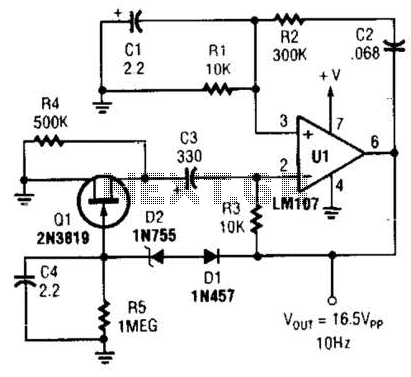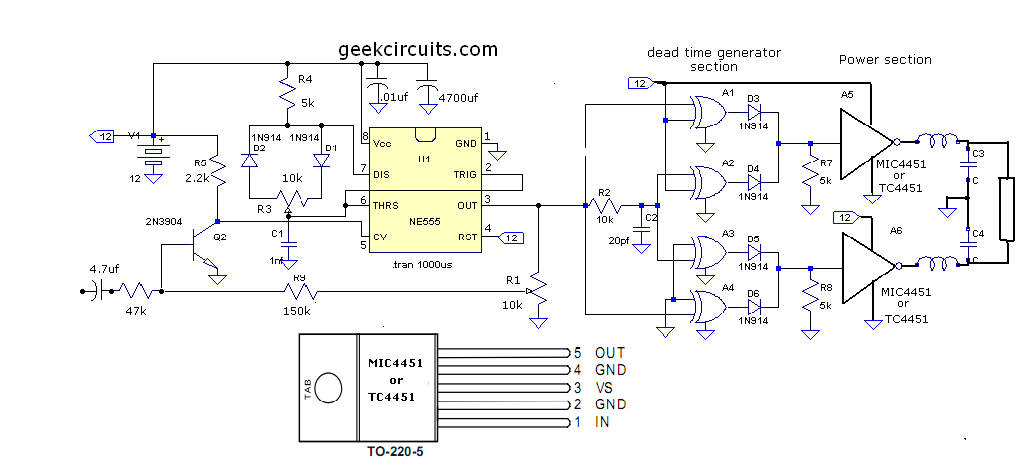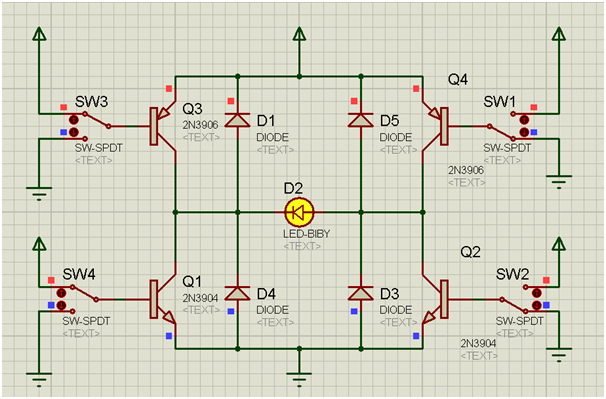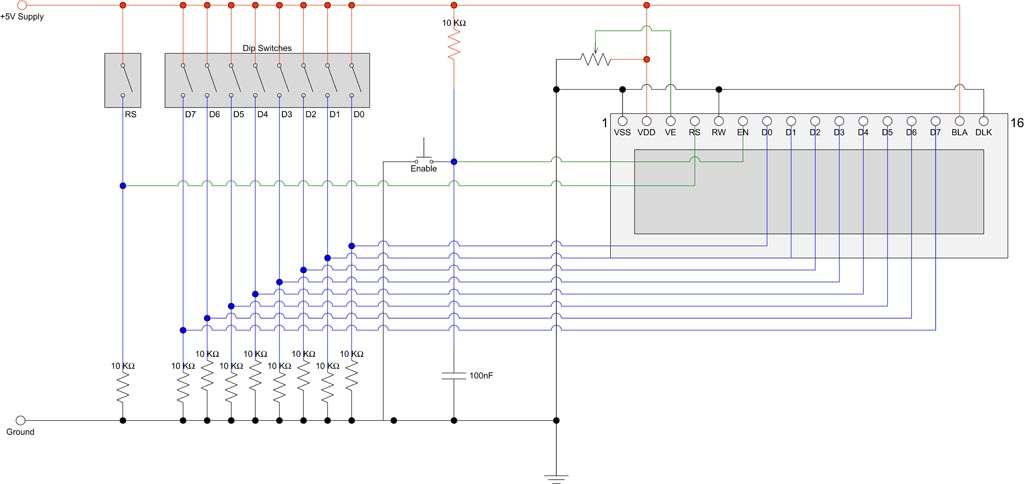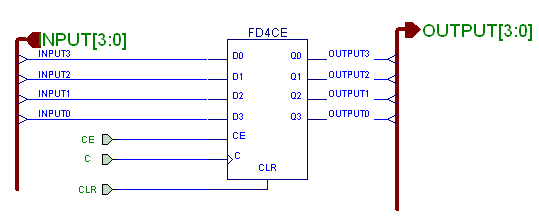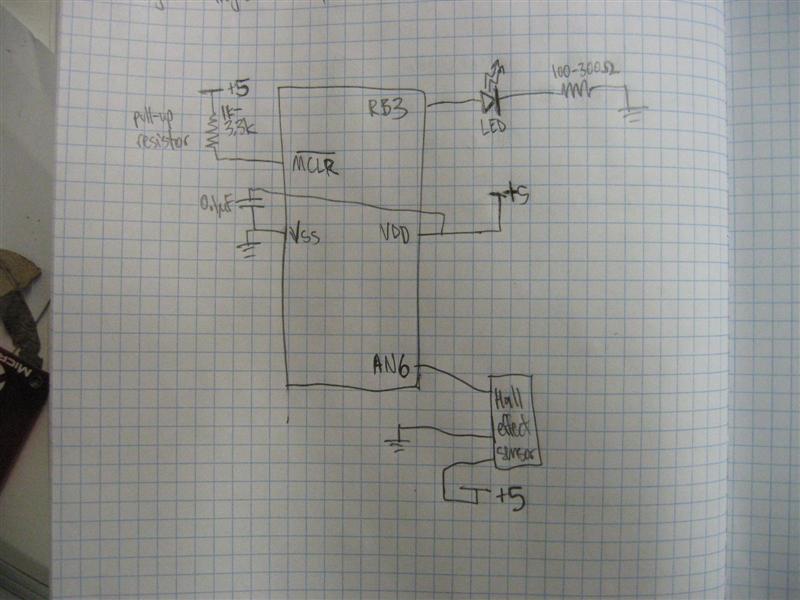
H Bridge tutorial
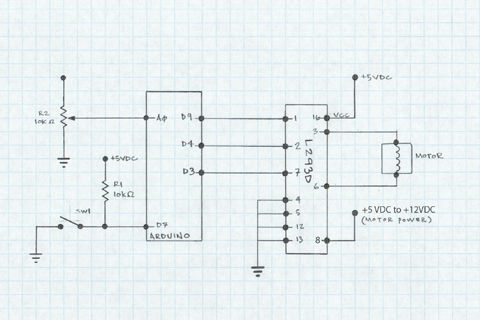
The L293D H-Bridge is utilized to operate a 12V DC motor with an Arduino. This H-Bridge facilitates the interfacing of the motor, which requires significantly more current and voltage than the output pins can provide. With minimal connections, it enables control over the direction of motor rotation, and through the Arduino's PWM output, it allows for speed control. In this circuit, a SPST switch is connected to the L293D to manage the speed, while a potentiometer is connected to Arduino pin A0 to adjust the PWM output on pin D9 using the analogWrite function. The pin layout of the L293D shows that only one of the two H-Bridges on the chip is utilized, allowing for the control of two motors with a single L293D.
The L293D H-Bridge is an integrated circuit designed for driving motors, particularly DC motors and stepper motors, in a bi-directional manner. It consists of two H-bridge circuits, enabling control of two motors or one motor in both directions. The H-bridge configuration allows for the reversal of voltage polarity across the motor terminals, thus controlling the direction of rotation.
In this specific application, the Arduino microcontroller serves as the control unit, sending signals to the L293D to dictate motor operation. The SPST switch provides a simple mechanism for the user to turn the motor on or off, effectively controlling its operational state. The potentiometer connected to pin A0 of the Arduino acts as an adjustable resistor, allowing the user to vary the resistance and thus the voltage sent to the PWM output. This voltage modulation translates to varying the duty cycle of the PWM signal on pin D9, which in turn adjusts the speed of the motor.
The analogWrite function used on pin D9 generates a PWM signal that can vary from 0 (off) to 255 (full speed), enabling fine control over the motor's speed. The L293D can handle up to 600 mA per channel, making it suitable for small to medium-sized DC motors. Additionally, it features built-in diodes for back EMF protection, ensuring that the circuit remains safe from voltage spikes generated when the motor is switched off or changes direction.
The design's efficiency is further enhanced by utilizing only one of the two available H-bridges in the L293D, allowing for the possibility of controlling an additional motor using the same chip. This dual functionality is advantageous in applications where space and component count must be minimized. Overall, this setup exemplifies a practical and effective method for controlling a DC motor's speed and direction using an Arduino and the L293D H-Bridge.We use the L293D H-Bridge to operate a 12VDC motor with the Arduino. This H-Bridge allows us to do several things. First it allows us to interface the motor, which requires much more current and voltage than the output pins can supply, with the Arduino. With minimal connections, it allows us to both control the direction of motor rotation and with the use of the Arduino PWM output it enables
us to add a speed control to the motor. In this circuit, we use a SPST switch connected to the L293D to control the speed and a potentiometer connected to Arduino pin A0 to control the PWM output (using the analogWrite function) on pin D9. If you look at the pin layout of the L293D you`ll notice that we utilize only one of the 2 H-Bridges on the chip, so two motors could be controlled using only one L293D.
🔗 External reference
The L293D H-Bridge is an integrated circuit designed for driving motors, particularly DC motors and stepper motors, in a bi-directional manner. It consists of two H-bridge circuits, enabling control of two motors or one motor in both directions. The H-bridge configuration allows for the reversal of voltage polarity across the motor terminals, thus controlling the direction of rotation.
In this specific application, the Arduino microcontroller serves as the control unit, sending signals to the L293D to dictate motor operation. The SPST switch provides a simple mechanism for the user to turn the motor on or off, effectively controlling its operational state. The potentiometer connected to pin A0 of the Arduino acts as an adjustable resistor, allowing the user to vary the resistance and thus the voltage sent to the PWM output. This voltage modulation translates to varying the duty cycle of the PWM signal on pin D9, which in turn adjusts the speed of the motor.
The analogWrite function used on pin D9 generates a PWM signal that can vary from 0 (off) to 255 (full speed), enabling fine control over the motor's speed. The L293D can handle up to 600 mA per channel, making it suitable for small to medium-sized DC motors. Additionally, it features built-in diodes for back EMF protection, ensuring that the circuit remains safe from voltage spikes generated when the motor is switched off or changes direction.
The design's efficiency is further enhanced by utilizing only one of the two available H-bridges in the L293D, allowing for the possibility of controlling an additional motor using the same chip. This dual functionality is advantageous in applications where space and component count must be minimized. Overall, this setup exemplifies a practical and effective method for controlling a DC motor's speed and direction using an Arduino and the L293D H-Bridge.We use the L293D H-Bridge to operate a 12VDC motor with the Arduino. This H-Bridge allows us to do several things. First it allows us to interface the motor, which requires much more current and voltage than the output pins can supply, with the Arduino. With minimal connections, it allows us to both control the direction of motor rotation and with the use of the Arduino PWM output it enables
us to add a speed control to the motor. In this circuit, we use a SPST switch connected to the L293D to control the speed and a potentiometer connected to Arduino pin A0 to control the PWM output (using the analogWrite function) on pin D9. If you look at the pin layout of the L293D you`ll notice that we utilize only one of the 2 H-Bridges on the chip, so two motors could be controlled using only one L293D.
🔗 External reference
Warning: include(partials/cookie-banner.php): Failed to open stream: Permission denied in /var/www/html/nextgr/view-circuit.php on line 713
Warning: include(): Failed opening 'partials/cookie-banner.php' for inclusion (include_path='.:/usr/share/php') in /var/www/html/nextgr/view-circuit.php on line 713
